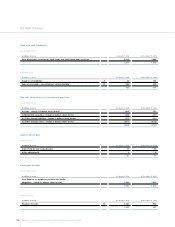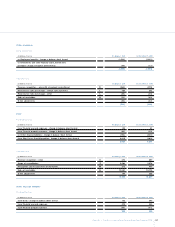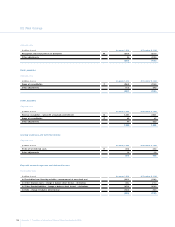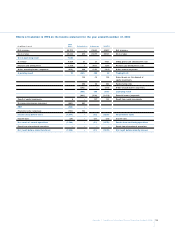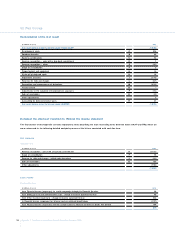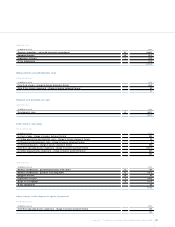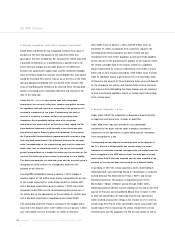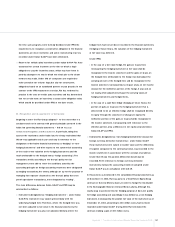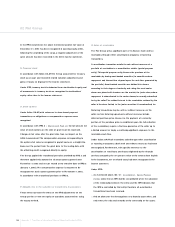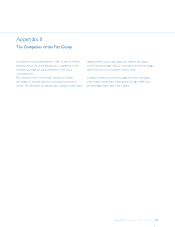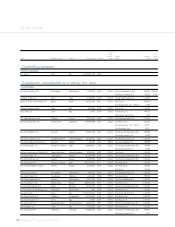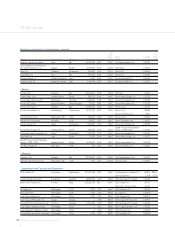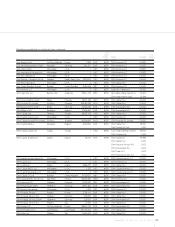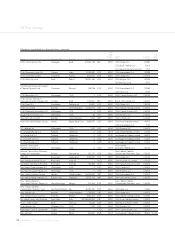Chrysler 2005 Annual Report Download - page 167
Download and view the complete annual report
Please find page 167 of the 2005 Chrysler annual report below. You can navigate through the pages in the report by either clicking on the pages listed below, or by using the keyword search tool below to find specific information within the annual report.
166 Appendix 1 Transition to International Financial Reporting Standards (IFRS)
02 Fiat Group
reduced by 266 million euros by the amount corresponding to the
unrealised intercompany profit in inventory held by SCD R on that
date;this amount did not change significantly at the end of 2004.
G. Property, plant and equipment
Under Italian GAAP and IFRS, assets included in Property, Plant and
Equipment were generally recorded at cost, corresponding to the
purchase price plus the direct attributable cost of bringing the assets
to their working condition.
Under Italian GAAP, Fiat revalued certain Property, Plant and
Equipment to amounts in excess of historical cost, as permitted or
required by specific laws of the countries in which the assets were
located.These revaluations were credited to stockholders’ equity and
the revalued assets were depreciated over their remaining useful
lives.
Furthermore, under Italian GAAP, the land directly related to
buildings included in Property, Plant and Equipment was depreciated
together with the related building depreciation.
The revaluations and land depreciation are not permitted under IFRS.
Therefore IFRS stockholders’ equity at January 1, 2004 reflects a
negative impact of 164 million euros, related to the effect of the
elimination of the asset revaluation recognised in the balance sheet,
partially offset by the reversal of the land depreciation charged to
prior period income statements.
In the 2004 IFRS income statement, the above-mentioned
adjustments had a positive impact of 14 million euros in 2004 due to
the reversal of the depreciation of revalued assets, net of adjustments
on gains and losses, if any, on disposal of the related assets, and to
the reversal of land depreciation.
H .W rite-off of deferred costs
Under Italian GAAP, the Group deferred and amortised certain costs
(mainly start-up and related charges). IFRS require these to be
expensed when incurred.
In addition, costs incurred in connection with share capital increases,
which are also deferred and amortised under Italian GAAP, are
deducted directly from the proceeds of the increase and debited to
stockholders’ equity under IFRS.
I. Impairment of assets
Under Italian GAAP, the Group tested its intangible assets with
indefinite useful lives (mainly goodwill) for impairment annually by
comparing their carrying amount with their recoverable amount in
terms of the value in use of the asset itself (or group of assets). In
determining the value in use the Group estimated the future cash
inflows and outflows of the asset (or group of assets) to be derived
from the continuing use of the asset and from its ultimate disposal,
and discounted those future cash flows. If the recoverable amount
was lower than the carrying value, an impairment loss was
recognized for the difference.
W ith reference to tangible fixed assets, under Italian GAAP the
Group accounted for specific write-offs when the asset was no
longer to be used. Furthermore, in the presence of impairment
indicators, the Group tested tangible fixed assets for impairment
using the undiscounted cash flow method in determining the
recoverable amount of homogeneous group of assets. If the
recoverable amount thus determined was lower than the carrying
value, an impairment loss was recognised for the difference.
Under IFRS, intangible assets with indefinite useful lives are tested for
impairment annually by a methodology substantially similar to the
one required by Italian GAAP. Furthermore, development costs,
capitalised under IFRS and expensed under Italian GAAP, are
attributed to the related cash generating unit and tested for
impairment together with the related tangible assets, applying the
discounted cash flow method in determining their recoverable
amount.
Consequently, the reconciliation between Italian GAAP and IFRS
reflects adjustments due to both impairment losses on development
costs previously capitalised for IFRS purposes, and the effect of
discounting on the determination of the recoverable amount of
tangible fixed assets.
L. Reserves for risks and charges
Differences between Italian GAAP and IFRS refer mainly to the
following items:
Restructuring reserve:the Group provided restructuring reserves
based upon management’s best estimate of the costs to be
incurred in connection with each of its restructuring programs at


